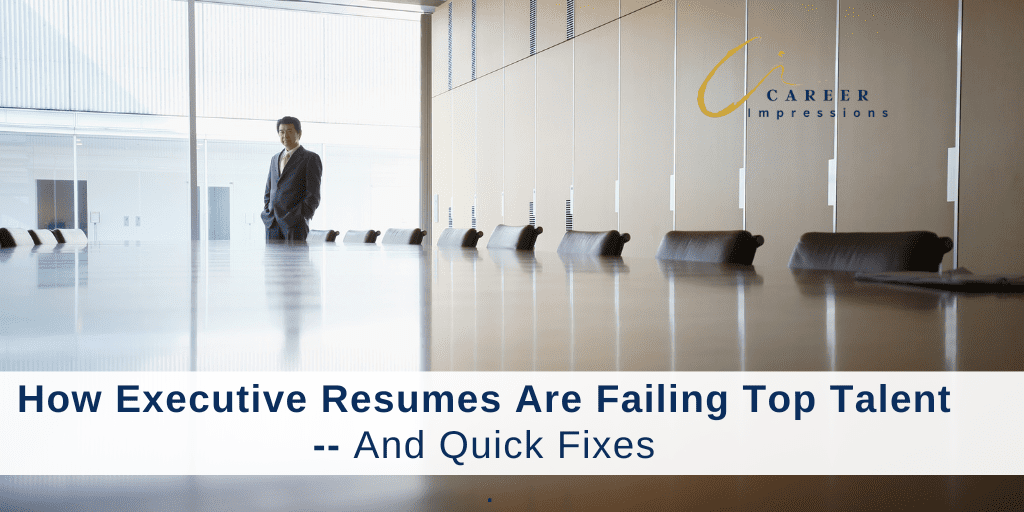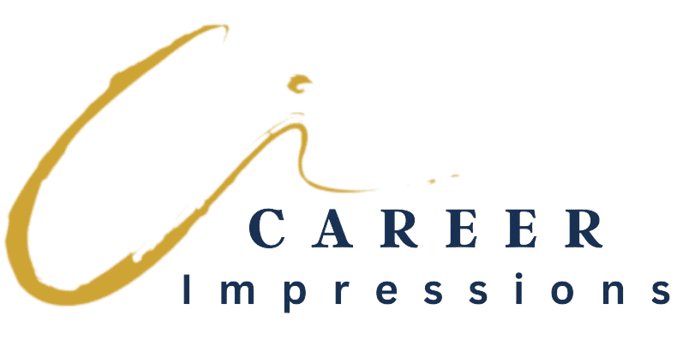
How Executive Resumes Are Failing Top Talent — And Quick Fixes
In today’s high-stakes hiring environment, your resume is no longer just a summary of past roles. For senior leaders, it must serve as a strategic positioning document that communicates business impact, vision, and readiness to lead in complex, rapidly changing markets.
And yet, many executives are discovering that their resumes aren’t opening the right doors. Despite impressive careers, they’re being passed over, ignored by recruiters, or misaligned with the roles they’re targeting.
The problem? Executive resume writing has changed, and traditional formats of basic career chronology no longer meet the expectations of today’s decision-makers. In this article, I’ll explore why executive resumes are falling short and share insights on how modern executive resume strategies can help better position top talent for opportunities.
The Resume Isn’t a Biography. It’s a Business Case.
A common mistake among executives is treating the resume as a running list of job titles and responsibilities. But hiring decision-makers, including search firms and boards, aren’t just looking for career progression—they’re evaluating leadership effectiveness and strategic fit.
According to Harvard Business Review, executive resumes often fail to connect past achievements with future value. This oversight can be the deciding factor between landing an interview and being overlooked.
Instead of relying on generalized language or legacy formats, today’s executive resume writing must focus on differentiation, clarity, and alignment.
What Employers and Recruiters Want in an Executive Resume
A 2024 LinkedIn Talent Solutions report shows that hiring for executive roles now hinges on demonstrated adaptability, innovation, and tangible business outcomes.
An effective executive resume should immediately reflect:
-
Measurable achievements tied to revenue, growth, transformation, or operational efficiency
-
Clear leadership in high-stakes or complex environments
-
Strategic initiatives that align with current business needs (e.g., M&A, digital transformation, restructuring)
-
Consistency of message with other career tools and communications, like LinkedIn
Without these elements, even a strong background can appear generic or outdated.

How to Fix Your Executive Resume: 5 Proven Strategies
If you want your resume to stand out among top-tier candidates, it must do more than outline your work history. Here’s how a leading executive resume writer recommends reframing and strengthening your resume today:
1. Lead with a Strategic Executive Summary
Your executive resume should begin with a powerful and concise summary that conveys your leadership brand, core competencies, and unique value.
This section should answer the question: What kind of executive are you, and why should a company invest in you?
Consider including:
-
Industry or functional expertise (e.g., “Global finance executive with a track record of EBITDA expansion in private equity-backed businesses”)
-
Key areas of strength (e.g., turnaround leadership, digital transformation, post-M&A integration)
-
A line on leadership style or philosophy that hints at culture fit
Avoid jargon and leading with years of experience (spoiler: your years of experience don’t matter as much as what you did with them). Prioritize clarity and differentiation.
2. Build Achievement-Driven Experience Sections
The cornerstone of strong executive resume writing is translating leadership experience into business outcomes.
Structure each role something like this:
-
2–3 lines of context: scope of role, number of reports, budget, company scale, what you stepped into / primary mandate
-
4–6 bullet points that focus on impact, not just activity
- Emphasize results (i.e., include metrics and specifics…even better, lead with results in statements, rather than burying them.)
Example:
Instead of saying: “Oversaw national operations,”
Say: “Optimized $180M national P&L across 5 divisions, driving 28% increase in operating margin through strategic restructuring.”
Include metrics where possible: revenue growth, cost savings, headcount managed, turnaround timelines, customer retention, etc.
3. Align Your Resume with Current Business Priorities
An executive resume writer doesn’t just document your career. They align the resume to the challenges companies are facing.
Do this by:
-
Researching job postings or industry trends to identify what’s in demand
-
Tailoring your resume language to reflect that demand
-
Highlighting how your past actions solved similar problems
If the market is focused on ESG leadership, AI integration, or global expansion, make sure your resume connects your experience to those priorities.
4. Refine for Clarity, Flow, and Reader Experience
Busy decision-makers spend mere minutes, at most, on a first scan. Your resume must be easy to navigate, skimmable, and high-impact.
Tactics include:
-
Keep the document to 2 pages on average. 3 pages at most.
-
Consider subsection headers within roles to highlight themes and strengths (e.g., “Global Expansion & Market Entry” or “Revenue Growth & Strategic Turnaround”)
-
Eliminate fluff and redundant content
-
Use white space and formatting for clarity, not decoration
Every line should earn its place. A professional executive resume writer will streamline your story without losing its strength.
5. Ensure Brand Alignment Across All Platforms
Your resume is just one piece of the executive branding puzzle. Your LinkedIn profile, board bio, and even interview language must reinforce a consistent leadership message. All communications should align (and yes, recruiters will look you up on LinkedIn).
Audit your materials for:
-
Tone consistency (formal vs. conversational)
-
Matching language and keywords
-
Alignment of accomplishments and roles
-
Visual consistency when using a portfolio or personal website
For a deeper dive into how to show business impact in an executive resume, see this Career Impressions article.
Invest in Strategy, Not Just Formatting
In a competitive market, your resume must work harder than ever. It must communicate strategy, value, and vision, not just experience.
Whether you’re preparing for a move, exploring board work, or ready to re-enter the market after a pause, the right resume is more than a formality. It’s a competitive advantage.
If you’re unsure how your current resume is performing, consider partnering with an experienced executive resume writer who understands the nuances of senior leadership branding. A strategic investment in your resume today can pay off with increased visibility, more effective conversations, and better job offers tomorrow.
———–
Want to see how your resume stacks up?
Explore executive-level services at CareerImpressions.ca or connect for a private consultation.
